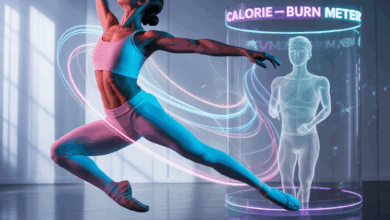How Many Calories Do You Burn When You Are Sick? — What Science & Experience Tell Us

Have you ever stayed in bed with a fever and wondered, “Am I burning more calories right now than when I’m healthy?” That question crosses a lot of minds—especially if you’re tracking calories, trying to keep muscle, or worried about losing progress. Let’s unpack what actually happens to your energy needs when illness strikes, and give practical, real-world advice for training, nutrition, and recovery.
What changes in your body when you’re sick?
Sickness is not one-size-fits-all. A sniffle feels different from the flu or a stomach bug, and each condition affects energy expenditure differently. Broadly, three systems shift during illness:
- Metabolic rate — your body’s baseline energy use can rise when fighting infection.
- Activity level — less movement (rest) typically lowers total calories burned, even if BMR is higher.
- Digestion and appetite — eating less reduces calories in, and digestive work changes how many calories are used for processing food.
Fever and metabolic rate
Fever is the biggest driver of increased calorie burn. A raised core temperature speeds up biochemical reactions — which means your basal metabolic rate (BMR) increases. A useful rule of thumb many clinicians use is that for each degree Celsius of fever your metabolic rate can rise by roughly 7–10%. So a mild fever can noticeably raise daily energy needs.
Shivering, coughing, and symptom-driven movement
Shivering (to generate heat) and repeated coughing or sneezing also burn extra calories. These motions are often intermittent but can add up during intense symptoms. Conversely, the rest you take when ill lowers calories burned through voluntary movement.
Digestion, absorption, and appetite changes
Gastrointestinal illnesses change how you absorb and use calories. Vomiting and diarrhea quickly reduce calorie intake and nutrient availability, which is sometimes more important than any extra calories burned.
How many calories do you burn when you are sick?
Short answer: It depends. Here’s a practical breakdown to give you real-world context.
- Mild cold (no fever): Little to no increase in BMR. Total daily energy expenditure (TDEE) often decreases because activity drops — net change: roughly -100 to +50 kcal/day depending on activity.
- Fever (moderate, ~1–2°C above normal): BMR may increase ~7–20% depending on temperature. For someone with a BMR of 1,600 kcal/day, that could mean an extra 120–320 kcal/day just from metabolic increases.
- High fever or prolonged systemic illness: Higher and sustained metabolic demands, possible muscle catabolism if calorie and protein intake are insufficient. Extra burn can be several hundred calories/day.
- Gastrointestinal illness: Calorie burn might not rise, but calorie intake and absorption fall—leading to deficits and dehydration risks.
Example: A 70 kg (154 lb) person with a normal BMR of ~1,600 kcal/day who develops a 1.5°C fever might experience a 10–15% increase — roughly 160–240 additional kcal burned that day. But if they also stop exercising and eat very little, net weight changes depend more on intake than that extra burn.
Practical fitness tips while you’re under the weather
Managing training and recovery while sick is all about smart choices—protecting your immune system, preserving muscle, and avoiding setbacks.
When to skip exercise
- Rule of thumb: symptoms above the neck (runny nose, mild sore throat) — light activity is often OK.
- Symptoms below the neck (fever, body aches, chest congestion, vomiting, diarrhea) — rest and no formal exercise.
- If in doubt, rest. Pushing through a fever or chest infection risks longer illness or complications.
Low-intensity workout variations for mild illness
- Short walks (10–30 minutes) at an easy pace.
- Gentle yoga or mobility routines focusing on breathing and range of motion.
- Light resistance work (bodyweight or resistance bands) for 10–15 minutes to preserve muscle if energy allows.
These options keep you moving, maintain habit, and usually don’t worsen a mild cold.
Nutrition & lifestyle advice to limit muscle loss
- Prioritize protein: aim for 20–30 g per meal when possible to support muscle repair and immune function.
- Hydrate aggressively: fluids and electrolytes matter, especially with fever, vomiting, or diarrhea.
- Consume easy-to-digest, nutrient-dense foods: broths, smoothies with protein, bananas, rice, and oatmeal.
- Sleep and rest: the immune system does most of its work during sleep — don’t skimp.
Real-world examples
Case 1 — Mild cold: “Maya” felt congested and skipped a hard gym day. She did a 20-minute walk and a light 15-minute bodyweight circuit. Her TDEE dropped slightly due to lower intensity, but she maintained protein intake and felt better in 3 days with no loss of strength.
Case 2 — Flu with fever: “David” had a 39°C (102°F) fever and stopped training entirely. His metabolic rate rose, burning an extra ~200–300 kcal/day, but he also ate less. He rested, rehydrated, and focused on protein. He returned to light training only after three symptom-free days.
Frequently Asked Questions
1. Will I lose weight if I’m sick for several days?
Short-term weight loss is usually water and glycogen, not fat. Prolonged calorie deficits combined with low protein intake can lead to muscle loss. Focus on hydration and protein to minimize muscle catabolism.
2. Can I exercise to “burn off” the extra calories from a fever?
No — exercising during a fever can be dangerous. The body is already stressed; additional activity may worsen illness or lengthen recovery. Wait until fever subsides and energy returns.
3. How long should I wait after being sick before returning to full training?
After mild illness, start with light sessions and increase intensity over a few days. For fevers or systemic illness, wait at least 48–72 hours after symptoms fully resolve before resuming heavy training. Listen to your body and progress gradually.
Conclusion
So, how many calories do you burn when you are sick? The range is wide: from negligible changes with a mild cold to several hundred extra calories daily during fever or systemic infections. More important than exact numbers is prioritizing recovery—hydrate, get protein, rest, and only do light activity if symptoms are mild. Protecting your health preserves your long-term fitness gains.
Ready to adapt your plan next time you feel under the weather? Check out our workout routines for light recovery sessions and our nutrition guides for simple, illness-friendly meals. For ongoing well-being strategies, explore our wellness tips. If you found this helpful, try implementing one recovery tip today and notice the difference—your future training will thank you.
Note: This article provides general information and is not medical advice. If you have severe symptoms or chronic conditions, consult a healthcare professional.





